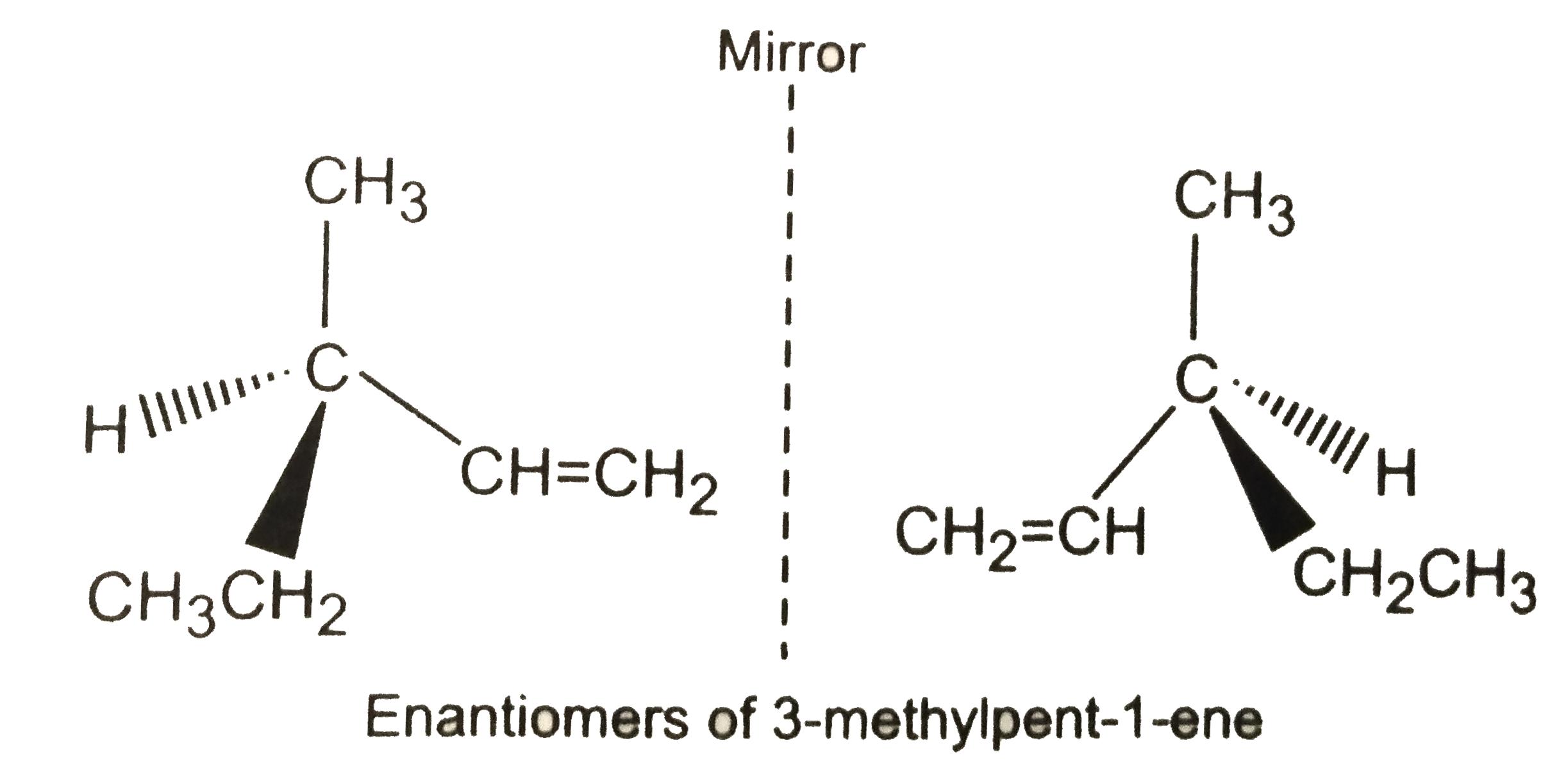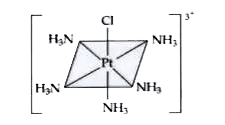InterviewSolution
This section includes InterviewSolutions, each offering curated multiple-choice questions to sharpen your knowledge and support exam preparation. Choose a topic below to get started.
| 851. |
Which of the following having a highest boiling point ? |
|
Answer» Ethane |
|
| 852. |
Which of the following compounds do not exist?N_(4), P_(4), PCI_(5), NCI_(3), P_(2)O_(5) ,NO_(2), PO_(2) |
|
Answer» `N_(4)` ,`NCI_(5)`, `NO_(2)` |
|
| 853. |
What happens when aniline is treated with bromine ? |
Answer» SOLUTION :ANILINE DECOLOURISES BROMINE water with the formation of while precipitate which is 2,4,6 - TRIBROMO aniline. 
|
|
| 854. |
Which of the following indicators is used in the titration of Na_(2)S_(2)O_(3) against CuSO_(4) solution? |
|
Answer» Starch If the indicater turns BLUE again. This is because some atmospheric oxidation has taken place forming `I_(2)`, which reacts with the starch to give the blue colour again. `2I^(-)+1/2 O_(2)+2H^(+) rarr I_(2)+H_(2)O` The end point of the titration is usually taken as being when the colour disappears and the solution remains colourless for half a minute. |
|
| 855. |
Whichof the folloiwng aminecan notbe perparedby Gabrielphtalinamidesynthesis ? |
|
Answer» METHYL AMINE |
|
| 856. |
Which of the following ceramics possesses good strength, translucency and very low porosity |
|
Answer» whiteware |
|
| 857. |
Which of the following process is not respondible for the presence of electric charge on the sol particles ? |
|
Answer» Electron capature by sol particles |
|
| 858. |
What would be electronic configuration of the following in the absence of Aufbaug rule? (a) Sr^(2+) (b) Rb^(+) |
|
Answer» Solution :(a) `Spr^(2+)-1S^(2)2S^(2)2p^(6)3s^(2)3p^(6)3d^(10)4s^(2)4p^(6)` (b)`Rb^(+)-1s^(2)2s^(2)2p^(6)3s^(2)3p^(6)3d^(10)4s^(2)4p^(6)` |
|
| 859. |
What is the effect of dilution on the equivalent conductance of strong electrolyte |
|
Answer» DECREASE on dilution |
|
| 860. |
Which of the following are anionic detergents ? |
|
Answer» SODIUM salts of sulphonated LONG chain alcohol. |
|
| 861. |
Yellow ammonium sulphide solution is a suitable reagent for the separation of:- |
|
Answer» HgS and PbS |
|
| 862. |
Which will give a yellow precipitate with iodine and alkali: |
|
Answer» 2-hydraxypropane |
|
| 863. |
Which of the following halide is most reactive towards Nucleophilic substitution reactions ? |
|
Answer» `H_(3)C-CH_(2)-F`<BR>`H_(3)C-CH_(2)-CL` |
|
| 864. |
Which of the following has same Vant Hoff factor |
|
Answer» `KCl, 50 %`ionised |
|
| 865. |
Which of the following metals continue to burn in nitrogen gas |
|
Answer» Li `6Li+N_(2)rarrunderset("LITHIUM nitride")(Li_3N),3Mg+N_(2)rarrunderset("Magnesium nitride")(Mg_(3)N_2)` |
|
| 866. |
Thermoplastics are |
|
Answer» LINEAR polymer |
|
| 867. |
Which moieties of nucleosides are involved in the formation of phosphodiester linkages present in dinucleotides ? What does the word diester in the name of linkage indicate ? Which acid is involved in the formation of this linkage ? |
| Answer» SOLUTION :A nucleoside is FORMED by the linkage of BASE to 1. position of SUGAR. When a phosphoric acid is attached to 5. position of sugar moiety, nucleotide is obtained. Two nucleotides are joined together by phosphodiester linkage between 5. and 3. carbon of pentose sugar. The linkage resembles with two ester groups joined together and THUS, it is called diester linkage. | |
| 868. |
Which of the following pairs of complexes are isomerric with each other but their aqueous solution exhibit different molar conductivities? |
|
Answer» `[PtCl_(2)(NH_(3))_(4)]Br_(2) and [Pt Br_(2)(NH_(3))_(4)]Cl_(2)`<BR>`[CoCl_(2)(NH_(3))_(4)]NO_(2) and [CoCl(NO_(2))(NH_(3))_(4)]Cl` `[Co(SO_(4))(NH_(3))_(5)Br hArr [Co(SO_(4))(NH_(3))_(5)]^(+)+Br^(-),"total charges"=2` Hence, both have DIFFERENT molar CONDUCTIVITIES. |
|
| 869. |
Write IUPAC name of coordination isomer of [Co(NH_(3))_(6)][Cr(CN)_(6)]. |
| Answer» Solution :Coordination isomer is `[CR(NH_(3))_(6)][CO(CN)_(6)]`. Its name is hexaamminechromium(III) hexacyanocobaltate(III). | |
| 870. |
The time taken for 10% completion of a first order reaction is 20 min . Then for 19% completion the reaction will take : |
|
Answer» 40 MINS `k = (2.303)/(x) "log" (100)/(81)` since (i) = (II) `(2.303)/(20)"log" (100)/(90) = (2.303)/(x) "log" (100)/(81)` `x= (20 "log"(100)/(81))/("log" (100)/(90))` `= (20xx0.0915)/(0.046) = 40 ` min |
|
| 871. |
Which one is not equal to zero for an ideal solution ? |
|
Answer» <P>`DELTA H_(MIX)` |
|
| 872. |
What type of aldehydes undergo Cannizaro reaction? |
|
Answer» Solution :ALDEHYDES that do not have `alpha` - hydrogen ATOM undergo CANNIZARO reaction. Eg: HCHO, `C_(6)H_(5)CHO`. |
|
| 873. |
Which of the following reactions will yield propan-2-ol ? Select the right answer from (a), (b), (c) and (d) I. CH_(2)=CH-CH_(3)+H_(2)O overset(H^(+))(rarr) II. CH_(3)-CHO overset(CH_(3)MgI//H_(2)O)(rarr) III. CH_(2)O underset(H_(2)O)overset(C_(2)H_(5)MgI)(rarr) IV. CH_(2)=CH-CH_(3) overset("Neutral "KMnO_(4))(rarr) |
|
Answer» I and II |
|
| 874. |
Which one of the following cation will give a blue coloured ash when a piece of filter paper dipped in a solution containing its salt and Co(NO_3)_2 is burned? |
|
Answer» `Cu^(2+)` |
|
| 875. |
What are enantiomers? Draw the structures of the possible enantiomers of 3-methylpent-1-ene. |
Answer» SOLUTION : STEREOISOMERS which are non-superimposable mirror IMAGES of each other are called ENANTIOMERS. The enantiomers of 3-methylpent-1-ene are: |
|
| 876. |
Which is manufactured by electrolysis of fused NaCl? |
|
Answer» NaOH |
|
| 877. |
What are the uses of phenol? |
|
Answer» Solution :(i) About half of world production of PHENOL is used for making phenol formaldehyde resin. (Bakelite) (ii) Phenol is a starting material for the preparation of drugs such as phenacetin, Salol, aspirin, etc. phenolphthalein indicator explosive LIKE pieric ACID. (iii) It is used as an antiseptic-CARBOLIC LOTION and carbolic soaps. |
|
| 878. |
Which of the following representation is correct? |
|
Answer» <P>`._(6)C^(12)(._(1)H^(1),. _(0)n^(1)) ._(7)N^(13)` |
|
| 879. |
Unit for radioactive constant is |
|
Answer» `"Time"^(-1)` |
|
| 880. |
Which of the following will not undergo aldol condensation: |
|
Answer» Acetaldehyde |
|
| 881. |
Which of the following gases gives a brown precipitate with FeSO_4 solution |
|
Answer» `N_2` `FesO_4+5H_(2)O+NO rarr [UNDERSET("Brown ring")(Fe(H_2O)_(5)NO^(+))]SO_4` |
|
| 882. |
There is no S-S bondin : |
|
Answer» `S_(2)O_(4)^(2-)` |
|
| 883. |
What is the role of t-butyl peroxide in the polymerization of ethene ? |
Answer» Solution :t-butyl peroxide acts as a radical INITIATOR in the POLYMERIZATION of ethane. The t-butoxide radical formed as a result of THERMAL decomposition of t-butyl peroxide adds to ethene molecule to form growing radical  The growing radical chain (I) combines with more and ethene molecules to form bigger and bigger radical chains which ultimately get TERMINATE EITHER by combination or disproportiontion to yield polythene polyer. Thus , the role of t-butyl peroxide is to start the process of polymerization. |
|
| 884. |
What is inversion of sugar ? |
| Answer» SOLUTION :Sucrose is dextrorotatory but on hydrolysis it GIVE an EQUIMOLAR mixture of `D-(+)` - glucose and `D-(-)` -fructose which is laevorotory. This CHANGE of specific rotation from dextrorotation to laevorotation iscalled inversion of SUGAR. | |
| 885. |
Which of the following is homologous of ethylene? |
|
Answer» `C_2H_2` |
|
| 886. |
Which of the following contains pungent odour : |
|
Answer» Esters |
|
| 888. |
Which of the following alkyl halides is used as a general anesthetic agent? |
| Answer» Answer :D | |
| 889. |
Which of the following statements about ribose is incorrect ? |
|
Answer» It is polyhydroxy ketone |
|
| 890. |
When propyne is treated with aqueous H_(2)SO_(4) in the presence of HgSO_(4), the major product is : |
|
Answer» propanal ` CH_3- C -= C - H + H_2O underset(HgSO_4) OVERSET(H_2SO_4)to underset("UNSTABLE cool")([CH_3-overset(OH)overset(|)C= CH_2]) IFF underset("acetone")(CH_3-overset(O)overset(||)C-CH_3` |
|
| 891. |
Which of the following sulphide(s) is (are) not decomposed with dil. H_(2)SO_(4)? |
|
Answer» `1`. PbS |
|
| 892. |
What happens when n-propyl benzene is oxidised using H^(+) // KMnO_4? |
Answer» Solution :When n - PROPYL BENZENE is oxidised with`H^(+) // KMnO_4`to gives benzoic ACID. 
|
|
| 893. |
Which of the following elements can be involved in p pi - d pi bonding ? |
|
Answer» CARBON |
|
| 894. |
Which of the following complex(s) can not exhibit both geometrical and optical isomerism? |
|
Answer» `[RU(EN)_(3)]^(3+)` |
|
| 895. |
Write the IUPAC name and draw the structure of coordination entities of [PtCI(NH_(3))_(5)]Cl_(3). |
Answer» Solution :IUPAC name of the COMPOUND is : Pentaamminechloridoplatinum(IV) chloride. It has octahedral STRUCTURE as shown. 
|
|
| 896. |
Which is correct statement for dextrin ? |
|
Answer» It cannot be HYDROLYZED |
|
| 897. |
The sugar present in DNA and RNA is …………… |
|
Answer» ALDOPENTOSES RIBOSE SUGAR is ALDOPENTOSE. |
|
| 898. |
Write the formuta of the following coordination compound. Iron (III) hexacyanoferrate (II) |
| Answer» SOLUTION :`FE[Fe(CN)_6]_3` | |
| 899. |
The unstable compounds are |
|
Answer» `MnI_7` |
|
| 900. |
When 22.4 litres of H_(2)(g) is mixed with 11.2 litres of Cl_(2)(g), each at S.T.P., the moles of HCl (g) formed is equal to |
|
Answer» 1 mol of HCl (g) 11.2 L of `Cl_(2)=(11.2)/(22.4)"mol = 0.5 mol of "Cl_(2)` `UNDERSET("1 mol")(H_(2)(g))+underset("1 mol")(Cl_(2)(g))rarrunderset("2 mol")(2HCl)(g)` Thus, `Cl_(2)` will be the limiting reagent and HCl formed by reaction of 0.5 mol of `Cl_(2)=1` mol |
|